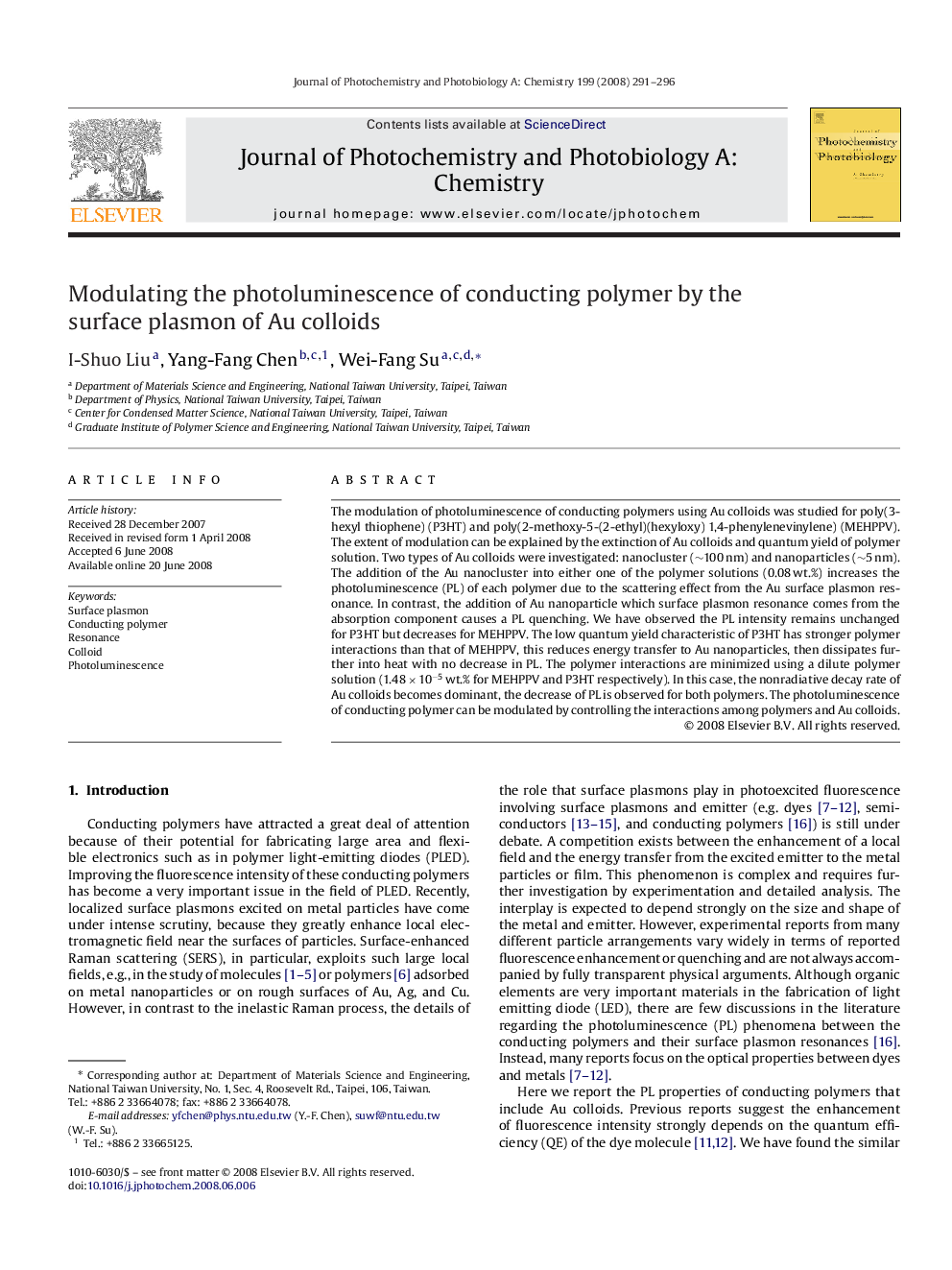| Article ID | Journal | Published Year | Pages | File Type |
|---|---|---|---|---|
| 29092 | Journal of Photochemistry and Photobiology A: Chemistry | 2008 | 6 Pages |
The modulation of photoluminescence of conducting polymers using Au colloids was studied for poly(3-hexyl thiophene) (P3HT) and poly(2-methoxy-5-(2-ethyl)(hexyloxy) 1,4-phenylenevinylene) (MEHPPV). The extent of modulation can be explained by the extinction of Au colloids and quantum yield of polymer solution. Two types of Au colloids were investigated: nanocluster (∼100 nm) and nanoparticles (∼5 nm). The addition of the Au nanocluster into either one of the polymer solutions (0.08 wt.%) increases the photoluminescence (PL) of each polymer due to the scattering effect from the Au surface plasmon resonance. In contrast, the addition of Au nanoparticle which surface plasmon resonance comes from the absorption component causes a PL quenching. We have observed the PL intensity remains unchanged for P3HT but decreases for MEHPPV. The low quantum yield characteristic of P3HT has stronger polymer interactions than that of MEHPPV, this reduces energy transfer to Au nanoparticles, then dissipates further into heat with no decrease in PL. The polymer interactions are minimized using a dilute polymer solution (1.48 × 10−5 wt.% for MEHPPV and P3HT respectively). In this case, the nonradiative decay rate of Au colloids becomes dominant, the decrease of PL is observed for both polymers. The photoluminescence of conducting polymer can be modulated by controlling the interactions among polymers and Au colloids.
